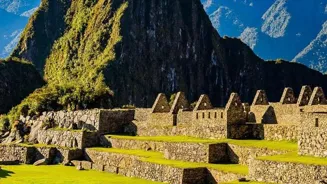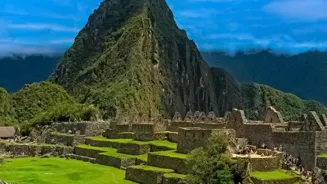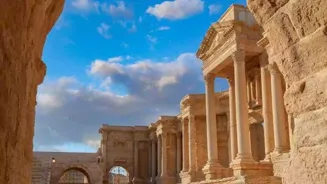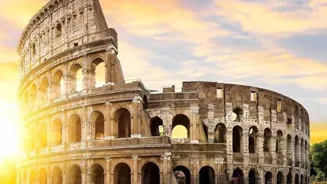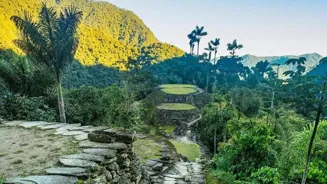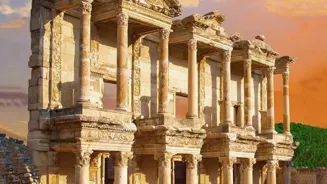Explore India's UNESCO wonders - from ancient caves to iconic monuments. Unveil history's mysteries
India, a land of vibrant culture and rich history, boasts a remarkable collection of UNESCO World Heritage
Sites. These sites, recognized for their outstanding universal value, offer a glimpse into the country's glorious past and diverse heritage.
From ancient temples to majestic forts, intricate cave paintings to breathtaking natural landscapes, India's UNESCO sites are a treasure trove waiting to be explored. Here's a list of 10 must-see sites that should be on every traveler's itinerary:
Ajanta Caves, Maharashtra
Nestled in the Sahyadri hills, the Ajanta Caves are a series of 30 rock-cut Buddhist cave monuments dating back to the 2nd century BCE to the 5th century CE. These caves are renowned for their exquisite mural paintings and sculptures, depicting scenes from the Jataka tales and the life of Buddha.
The vibrant colors and intricate details of the artwork offer a fascinating insight into the artistic and religious traditions of ancient India. Walking through these caves is like stepping back in time. Do remember to wear comfortable shoes as you would be walking quite a bit.
Photography isn't allowed with flash to preserve the paintings.
Ellora Caves, Maharashtra
Located a short distance from Ajanta, the Ellora Caves are another magnificent example of rock-cut architecture. These caves, carved between the 6th and 10th centuries CE, represent a unique fusion of Buddhist, Hindu, and Jain religious art.
The 34 caves comprise of 12 Buddhist, 17 Hindu, and 5 Jain caves, showcasing a remarkable spirit of religious tolerance and artistic excellence.
The most famous of these is the Kailasa Temple (Cave 16), an awe-inspiring monolithic rock-cut temple dedicated to Lord Shiva, which is an architectural marvel. It tells you a story.
Taj Mahal, Uttar Pradesh
An iconic symbol of love and architectural brilliance, the Taj Mahal in Agra is a must-visit for anyone traveling to India. This ivory-white marble mausoleum, built by Mughal emperor Shah Jahan in memory of his wife Mumtaz Mahal, is a masterpiece of Mughal architecture.
The intricate inlay work, symmetrical design, and serene ambiance of the Taj Mahal create a truly unforgettable experience. The best time to visit is early morning to avoid the crowds and witness the breathtaking sunrise over the monument.
The gardens surrounding Taj Mahal is a beautiful experience.
Khajuraho Group of Monuments, Madhya Pradesh
Famous for their exquisite sculptures, the Khajuraho Group of Monuments are a collection of Hindu and Jain temples built during the Chandela dynasty between the 9th and 12th centuries CE.
These temples are renowned for their intricate carvings, depicting various aspects of life, including religious beliefs, daily activities, and erotic art. The Kandariya Mahadeva Temple is the most impressive and significant of these temples.
The sculptures speak volumes about that era, so take a guide to understand these better.
Hampi, Karnataka
Once the capital of the Vijayanagara Empire, Hampi is a UNESCO World Heritage Site that transports you to a bygone era. This ancient city, situated on the banks of the Tungabhadra River, is a treasure trove of temples, palaces, and other architectural marvels.
The Virupaksha Temple, the Vittala Temple with its iconic stone chariot, and the Lotus Mahal are among the many must-see attractions in Hampi. Exploring the ruins of Hampi is like stepping into a living history book. The landscape is unique with boulders.
Fatehpur Sikri, Uttar Pradesh
Built by Mughal emperor Akbar in the 16th century, Fatehpur Sikri is a fortified city that served as the Mughal capital for a brief period. This city is a remarkable example of Mughal architecture, blending Persian and Indian styles.
The Buland Darwaza, Jama Masjid, and Panch Mahal are among the many impressive structures in Fatehpur Sikri. Although it enjoyed capital city status for only 10 years, the architecture speaks about the grand life. It's worth the visit. A day's trip from Agra would be good.
Kaziranga National Park, Assam
For nature enthusiasts, Kaziranga National Park is a must-visit destination. This UNESCO World Heritage Site is home to the world's largest population of one-horned rhinoceroses. The park also boasts a rich biodiversity, including tigers, elephants, wild water buffalo, and a variety of bird species.

A jeep safari or an elephant ride through the park offers an excellent opportunity to spot these magnificent creatures in their natural habitat. It's a treat for nature lovers. Remember to take your camera.
Keoladeo National Park, Rajasthan
Also known as Bharatpur Bird Sanctuary, Keoladeo National Park is a haven for bird watchers. This UNESCO World Heritage Site is a man-made wetland that attracts a large number of migratory birds, especially during the winter months.
The park is home to over 360 bird species, including herons, storks, egrets, and cormorants. A cycle ride or a leisurely walk through the park offers a chance to observe these beautiful birds in their natural environment. Take your binoculars as you may get to see birds from a distance.
Great Living Chola Temples, Tamil Nadu
A set of three magnificent temples built by the Chola emperors between the 11th and 12th centuries CE, the Great Living Chola Temples are a testament to the architectural prowess of the Chola dynasty.
These temples, namely the Brihadeeswarar Temple at Thanjavur, the Gangaikonda Cholapuram Temple, and the Airavatesvara Temple at Darasuram, are renowned for their intricate carvings, towering vimanas (temple towers), and impressive sculptures. These temples continue to be active places of worship.
Mountain Railways of India
This UNESCO World Heritage Site encompasses three railway lines built in the late 19th and early 20th centuries, demonstrating innovative engineering solutions in challenging mountainous terrain. These are The Darjeeling Himalayan Railway, The Nilgiri Mountain Railway and The Kalka-Shimla Railway.
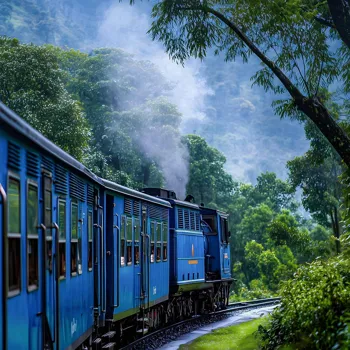
These charming trains offer a scenic journey through breathtaking landscapes, providing a unique and unforgettable travel experience. These railways are still functional.
Explore India's UNESCO sites for rich cultural experience
Visiting these UNESCO World Heritage Sites is an enriching experience that offers a glimpse into India's rich cultural and natural heritage. Each site has its own unique story to tell, and exploring them allows you to connect with the country's past and appreciate its diverse beauty.
So, plan your trip and embark on a journey to discover the wonders of India's UNESCO World Heritage Sites. These places are a cultural treat that would make you explore Indian culture even more.
AI Generated Content. Glance/InMobi shall have no liability for the content